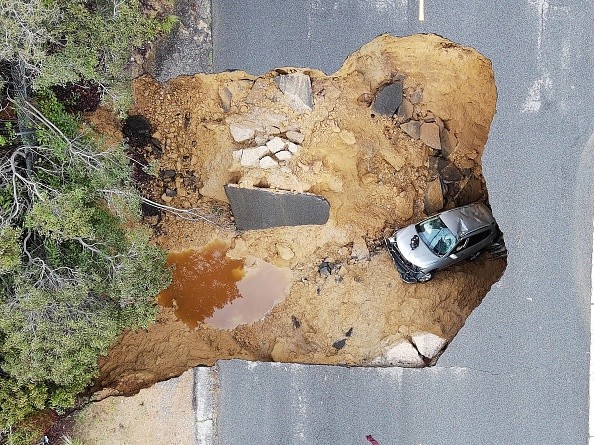In the very bottom of the upper mantle, according to a recent study, there may be a layer of rock that is remarkably fluid and surrounds the Earth.
The discovery was made by analyzing the lingering movement that GPS sensors on islands in the Pacific Ocean near Fiji detected after a strong earthquake, as per Science Daily.
Deep earthquakes expose mantle secrets

Sunyoung Park, a geophysicist at the University of Chicago and the study's principal author, noted that despite the mantle constituting the majority of Earth, there is still plenty we don't know about it.
Scientists have had to rely on clues like the motion of seismic waves to deduce the multiple layers that make up the planet, including crust, mantle, and core.
They have difficulty determining the exact viscosity of the mantle layer. The layer below the crust is known as the mantle.
Although it is comprised of rock, the extreme pressure and temperature at that level cause the rock to become viscous and flow very slowly, much like honey or tar.
The vast majority of earthquakes we hear about in the news begin in the Earth's top crust and are quite shallow. Yet, there are a few earthquakes that start 450 miles below the surface, deep inside the Earth.
However, Park thought that since they penetrate the mantle, they might offer a way to understand the mantle's behavior.
The earthquake was 8.2 on the Richter scale, but because it happened 350 miles below the earth's surface, it did not produce any damage or casualties.
Nevertheless, when the scientists carefully reviewed the data using GPS sensors on a number of nearby islands, they discovered that the Earth was still moving after the earthquake had passed.
The data demonstrated that even after the earthquake, the Earth was still moving and settling. Years later, Tonga is gradually disintegrating at a rate of about one centimeter every year.
Seismologists may have made other findings that suggested there are immobile rock slabs at the bottom of the upper mantle that are situated at a depth of around the same. These observations may be explained by the low viscosity layer.
Subduction zones are cause of deep earthquakes
The depths of earthquakes along convergent plate boundaries with subduction zones varies from shallow to up to 700 km, as per University of Saskatchewan.
Where the two plates clash, earthquakes occur, as well as in deformation zones on the overriding plate along with the subducting slab deeper in the mantle.
As a result, deeper earthquakes will correspond to earthquake epicentres that are located farther inside the overriding plate.
In the Aleutian volcanic arc, in which the Pacific plate subducts beneath the North American plate, earthquakes deepen as they move northward and follow the Pacific plate into the mantle. Red circles indicate earthquakes that happen between 0 and 33 kilometers deep; teeth indicate the direction of subducting slab.
Deep Earthquakes can create sinkholes
Sinkholes may form as a result of earthquakes, provided that they strike regions where there is weak rock beneath the surface, which is a natural occurrence, as per Conserve Energy Future.
Yet, there are more earthquakes that are intentionally caused by human and industrial activity, which also results in sinkholes. A sinkhole can be as little as one meter in depth and width or as large as hundreds of feet.
Related Article: What Exactly Causes Mysterious Deep Earthquakes?
© 2026 NatureWorldNews.com All rights reserved. Do not reproduce without permission.





